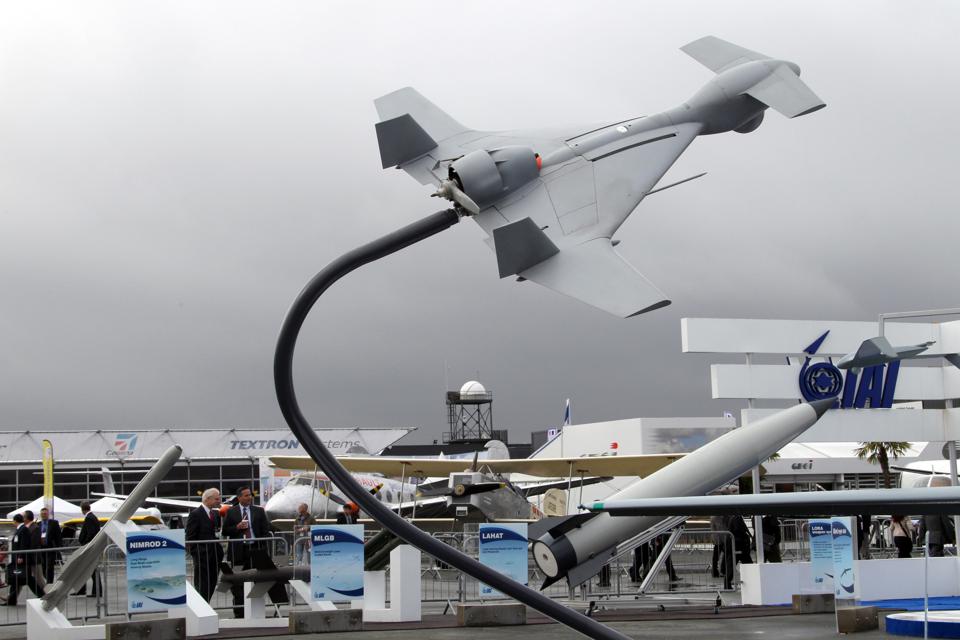The US Army is planning to develop a powerful counter-drone laser system to shoot down enemy UAVs to ensure the safety of its Special Forces. The move was necessitated by the growing use of assault drones by terrorist organizations against the American forces deployed in conflict zones.
As India Permits A ‘Little Japan’ In Rajasthan, Is The Stage Set For Many ‘Little Indias’ In Japan?
The winning vendors will be awarded the contract for two high-energy lasers and radar systems. The aim is to develop an efficient system for the early detection and elimination of enemy drones.
Countries such as the US, Israel, Turkey, China, and the United Kingdom have realized the immense potential of Unmanned Aerial Vehicles (UAVs) and invested in drone technologies.
From the tiny Black Hornet Personal Reconnaissance System to the largest 47.6-ft long Northrop Grumman RQ-4, drones of various shapes and sizes are currently being operated by the militaries across the globe.
However, the use of drones is not restricted to the military alone with there being an upsurge in cheaper and commercial alternatives, which often fall in the hands of non-state actors, including terrorists.
Among the various drones, loitering munitions or kamikaze drones pose a bigger risk to the armed forces. These unmanned combat air vehicles (UCAVs) loiter around a particular area for a specific amount of time during which they gather information regarding the targets, before identifying the target and eventually attacking it.
While some of these drones are controlled for missions by a human operator, other drones like the Israeli Harop can function autonomously by searching targets and launching attacks without human intervention.

It is one of the reasons why the US Army and a host of other militaries across the world are working towards enhancing their anti-drone capabilities to provide a safe passage for their troops.
The Army Rapid Capabilities and Critical Technologies Office, which caters to meeting the warfighting needs and the Army’s modernization priorities, has added a new section to build powerful counter-drone systems under “Counter Small Unmanned Aerial System High Energy Laster,” or C-sUAS HEL.
As per the program statement provided by the Defense Systems Journal, the Army Rapid Capabilities and Critical Technologies Office, “The exponential growth of small unmanned aircraft systems (sUAS) creates new risks for the Department of Defense (DoD). Technology trends are dramatically transforming legitimate applications of sUAS while simultaneously making them increasingly capable weapons in the hands of state actors, non-state actors, and criminals,
“The DoD must protect and defend personnel, facilities, and assets in an environment where increasing numbers of sUAS will share the skies with DoD aircraft, operate in the airspace over DoD installations, and be employed by our Nation’s adversaries.”
The state further says the primary opportunity and purpose of this effort are to “integrate a government-owned High Energy Laser subsystem with power and thermal subsystem and sensor package to demonstrate increased lethality in negating sUAS”.
The development of lasers can be categorized under the Directed Energy Weapons or DEWS that use highly focused energy, including laser, microwaves, and particle beams to damage targets. The weapons can be used to target enemy fighter jets, personnel, vehicles, missiles, and optical devices.
The idea of striking down drones using lasers, however, is not new with the US military working on high-energy laser systems for years.
In the latest attempt, there would be an application of the existing military research to countering small drones to ensure the safety of the Special Forces.
The winning vendors will be supplied with two Army-owned “high energy laser weapons systems and two surveillance radar systems”.
The combination of those will be used to develop a counter-drone system. The process will involve “designing, integrating, prototyping and delivering” an efficient counter-drone system.
The system should be able to “detect and characterize Class 1 and 2 UAS threats at standoff ranges”. It should possess the “hard-kill capability against Class 1 and 2 unmanned aerial systems using a high energy laser at standoff ranges with high reliability”.
Follow EurAsian Times on Google News